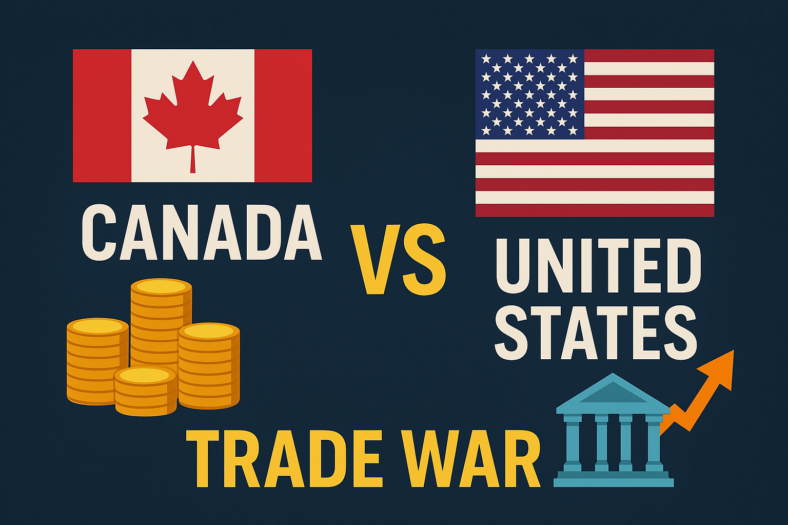This guide aims to shed light on the intricacies of new car financing in Canada, offering comprehensive insights into the various options available, the factors influencing financing decisions, and essential considerations for prospective car buyers. From understanding the basics of interest rates and loan terms to navigating the intricacies of dealership financing and alternative financing avenues, this guide endeavors to equip readers with the knowledge and tools necessary to make informed decisions when embarking on their journey to purchase a new vehicle.
As we delve into the nuances of new car financing, it becomes evident that the landscape is as diverse as the Canadian terrain itself, with an array of financing options tailored to suit different needs and preferences. Whether you’re a first-time buyer navigating the waters of auto loans or a seasoned veteran seeking to optimize your financing strategy, this guide is designed to serve as your comprehensive companion, offering clarity amidst the complexities of new car financing in Canada. So, buckle up as we embark on this journey, exploring the highways and byways of automotive financing in the Great White North.
Best New Car Loans in Canada – Our Top Picks
What is new car financing how does it work?
New car financing is a financial arrangement that enables individuals to purchase a new vehicle by spreading the cost over time through a loan or lease agreement. Here’s how it typically works:
Loan Financing: With loan financing, the buyer borrows a sum of money from a lender, such as a bank, credit union, or automotive finance company, to purchase the car. The loan amount is typically determined by the purchase price of the vehicle minus any down payment or trade-in value. The borrower then repays the loan amount plus interest over a specified period, usually ranging from three to seven years.
Lease Financing: Lease financing involves leasing the vehicle from the dealership or a leasing company for a set period, usually two to four years. During the lease term, the lessee makes monthly payments based on the vehicle’s depreciation and any applicable fees or interest charges. At the end of the lease term, the lessee typically has the option to return the vehicle, purchase it outright at a predetermined price (known as the residual value), or enter into a new lease agreement.
In both loan and lease financing, the terms of the agreement, including the interest rate, loan or lease term, down payment amount, and monthly payments, are negotiated between the buyer and the lender or lessor. The interest rate, which may be fixed or variable, determines the cost of borrowing money and can vary based on factors such as the buyer’s credit history, the loan term, and prevailing market rates.
It’s essential for buyers to carefully review and understand the terms and conditions of any financing agreement before committing to ensure they are comfortable with the repayment terms and can afford the monthly payments. Additionally, buyers should shop around and compare financing offers from multiple lenders or dealerships to secure the most favorable terms and potentially save money over the life of the loan or lease.
Pros and cons of new car financing
New car financing offers several advantages and disadvantages that prospective buyers should consider before making a decision. Here’s a detailed overview:
Pros:
Ownership: Financing allows you to own the vehicle outright once the loan is paid off or to buy out the lease at the end of the term, providing you with the flexibility to customize, modify, or sell the car as desired.
Flexible Loan Terms: Financing offers flexibility in choosing the loan term, allowing you to spread out the cost of the vehicle over several years, which can help make monthly payments more affordable.
Low Down Payment Options: Many lenders offer financing options with low or no down payment requirements, enabling buyers to purchase a new car with minimal upfront costs.
Build Equity: With loan financing, each payment contributes to building equity in the vehicle, which can be advantageous if you plan to sell or trade in the car in the future.
Potential Lower Interest Rates: Buyers with good credit may qualify for lower interest rates on auto loans, resulting in lower overall borrowing costs compared to other financing options.
Cons:
Depreciation: New cars depreciate rapidly in value, often losing a significant portion of their worth in the first few years of ownership. Financing a new car means you’ll be paying off a loan on a depreciating asset, potentially leaving you owing more than the car is worth if it’s totaled or you decide to sell it before the loan is paid off.
Interest Costs: Financing a vehicle involves paying interest on the loan amount, which can increase the total cost of ownership over time, especially if you opt for a longer loan term or have a higher interest rate.
Monthly Payments: Financing requires making monthly payments over the loan term, which can be a financial burden if the payments are too high or if your financial situation changes unexpectedly, such as job loss or illness.
Potential for Negative Equity: If you finance a new car with a small down payment or a long loan term, you may end up owing more on the loan than the car is worth, especially in the early years of ownership when depreciation is highest. This situation, known as negative equity or being “upside down” on the loan, can make it challenging to sell or trade in the vehicle without taking a financial loss.
Restrictions on Mileage and Usage: Lease financing typically comes with mileage restrictions and usage guidelines, which can limit your freedom to drive the vehicle as desired and may result in additional fees for excess mileage or wear and tear.
By carefully weighing the pros and cons of new car financing and considering your individual financial situation, goals, and preferences, you can make an informed decision that aligns with your needs and priorities.
Types of new car financing options available in Canada
In Canada, prospective car buyers have access to various financing options tailored to their needs and preferences. Here are the primary types of new car financing options available:
Bank and Credit Union Loans: Many Canadian banks and credit unions offer auto loans specifically designed for purchasing new vehicles. These loans typically come with fixed or variable interest rates and flexible repayment terms, allowing borrowers to choose the loan term that best fits their budget and financial goals. Borrowers can apply for a loan directly from their financial institution or through a dealership’s financing department.
Dealership Financing: Car dealerships often partner with financial institutions or have in-house financing departments to offer financing options to customers. Dealership financing may include manufacturer-sponsored promotions, such as low or zero percent financing incentives, which can be advantageous for buyers with good credit. However, it’s essential to carefully review the terms and conditions of dealership financing offers to ensure they are competitive and transparent.
Manufacturer Financing Programs: Vehicle manufacturers frequently provide financing programs through their captive finance companies or partnerships with third-party lenders. These programs may include special financing rates, cash rebates, or lease incentives for qualifying buyers. Manufacturer financing can be an attractive option for buyers looking to take advantage of promotional offers and incentives while purchasing a new car.
Lease Financing: Leasing is another popular financing option in Canada, offering lower monthly payments and flexibility at the end of the lease term. With a lease, the lessee pays for the depreciation of the vehicle over the lease term rather than the full purchase price. At the end of the lease term, the lessee can return the vehicle, purchase it outright at a predetermined price (known as the residual value), or enter into a new lease agreement. Lease financing may appeal to buyers who prefer to drive a new car every few years or who want to avoid the long-term commitment of ownership.
Alternative Financing Sources: In addition to traditional lenders and dealerships, buyers in Canada may explore alternative financing sources, such as online lenders, peer-to-peer lending platforms, or specialty finance companies. These alternative sources may offer competitive rates and terms for buyers with unique financial situations or credit profiles.
By exploring the various financing options available in Canada and comparing offers from multiple lenders or dealerships, buyers can secure the most favorable terms and make informed decisions when purchasing a new car. It’s essential to consider factors such as interest rates, loan or lease terms, down payment requirements, and any applicable fees or incentives to find the financing option that best suits your needs and budget.
How to find the best new car financing in Canada
Finding the best new car financing in Canada involves thorough research, comparison shopping, and careful consideration of your financial situation and preferences. Here’s a detailed guide on how to find the most favorable financing option for your new car purchase:
Check Your Credit Score: Start by checking your credit score, as it plays a significant role in determining the interest rate and terms you’ll qualify for. A higher credit score generally translates to lower interest rates and more favorable financing offers. You can obtain a free copy of your credit report from major credit bureaus in Canada, such as Equifax or TransUnion, and review your credit history for any errors or discrepancies that may need to be addressed.
Research Lenders and Dealerships: Research banks, credit unions, online lenders, and dealerships that offer new car financing in Canada. Explore their websites, read customer reviews, and compare interest rates, loan terms, down payment requirements, and fees associated with each financing option. Pay attention to any special promotions, incentives, or manufacturer-sponsored financing programs that may be available.
Get Pre-Approved: Consider getting pre-approved for a car loan from multiple lenders before visiting dealerships or shopping for a vehicle. Pre-approval allows you to know exactly how much you can afford to borrow and helps streamline the car-buying process by giving you negotiating power and clarity on financing terms. Submitting loan applications to multiple lenders within a short period typically counts as a single inquiry on your credit report, minimizing the impact on your credit score.
Compare Financing Offers: Once you have pre-approval offers from multiple lenders, compare the terms and conditions carefully to identify the most competitive financing option. Pay attention to factors such as the interest rate, loan term, monthly payment amount, down payment requirement, any applicable fees (e.g., origination fees, prepayment penalties), and whether the loan is fixed-rate or variable-rate. Consider using online comparison tools or consulting with a financial advisor to help you evaluate and compare financing offers effectively.
Negotiate with Dealerships: If you choose to finance through a dealership, negotiate the financing terms along with the vehicle price. Dealerships often have the ability to offer competitive financing rates and may have access to manufacturer-sponsored promotions or incentives. Be prepared to negotiate the interest rate, loan term, down payment, and any additional fees to ensure you’re getting the best possible financing deal.
Read and Understand the Fine Print: Before signing any financing agreement, carefully read and understand all the terms and conditions, including the loan or lease contract, disclosures, and any add-ons or optional products offered by the lender or dealership. Pay attention to the fine print, especially regarding interest rates, payment schedules, late fees, early repayment options, and any conditions that may affect your ability to refinance or modify the loan in the future.
Consider Using a Co-Signer: If you have limited credit history or poor credit, consider using a co-signer with good credit to strengthen your loan application and potentially qualify for better financing terms. Keep in mind that the co-signer is equally responsible for repaying the loan and that their credit history will also be impacted by the loan.
By following these steps and taking the time to research, compare, and negotiate financing options, you can increase your chances of finding the best new car financing deal in Canada that aligns with your budget, preferences, and financial goals. Remember to stay informed, ask questions, and advocate for yourself throughout the financing process to ensure a smooth and successful car-buying experience.
How to apply for a new car loan in Canada
Applying for a new car loan in Canada involves several steps to ensure a smooth and efficient process. Here’s a detailed guide on how to apply for a car loan:
Check Your Credit Score: Before applying for a car loan, it’s essential to check your credit score and review your credit report. Your credit score plays a significant role in determining the interest rate and terms you’ll qualify for. You can obtain a free copy of your credit report from major credit bureaus in Canada, such as Equifax or TransUnion, and review your credit history for any errors or discrepancies that may need to be addressed.
Determine Your Budget: Evaluate your financial situation and determine how much you can afford to borrow for a new car. Consider factors such as your monthly income, existing debt obligations, living expenses, and savings goals. Use online calculators or budgeting tools to estimate your monthly car payment and ensure it fits comfortably within your budget.
Research Lenders: Research banks, credit unions, online lenders, and dealerships that offer car loans in Canada. Explore their websites, read customer reviews, and compare interest rates, loan terms, down payment requirements, and fees associated with each lender. Consider factors such as customer service reputation, convenience, and any special promotions or incentives offered.
Gather Required Documents: Before applying for a car loan, gather the necessary documents to support your loan application. Commonly required documents may include:
- Proof of identity (e.g., driver’s license, passport)
- Proof of income (e.g., recent pay stubs, employment letter, income tax returns)
- Proof of residence (e.g., utility bill, lease agreement)
- Vehicle information (e.g., VIN number, purchase agreement)
Apply for Pre-Approval: Consider getting pre-approved for a car loan from multiple lenders before shopping for a vehicle. Pre-approval allows you to know exactly how much you can afford to borrow and helps streamline the car-buying process by giving you negotiating power and clarity on financing terms. You can typically apply for pre-approval online or by visiting a bank branch, credit union, or dealership.
Submit Loan Application: Once you’ve selected a lender and gathered all the necessary documents, it’s time to submit your car loan application. You can usually apply for a car loan online, over the phone, or in person at a bank branch, credit union, or dealership. Be prepared to provide detailed information about your income, employment history, residence, and the vehicle you intend to purchase.
Review Loan Offers: After submitting your loan application, review the loan offers from different lenders carefully. Compare the interest rates, loan terms, monthly payment amounts, down payment requirements, and any applicable fees to identify the most competitive offer that aligns with your budget and financial goals.
Negotiate Terms: If you receive multiple loan offers, you may have the opportunity to negotiate the terms and conditions with the lenders to secure the best possible financing deal. Consider factors such as interest rate, loan term, down payment, and any additional fees to ensure you’re getting the most favorable terms.
Finalize Loan Agreement: Once you’ve selected a loan offer and negotiated the terms, carefully review and sign the loan agreement. Be sure to read and understand all the terms and conditions, including the interest rate, repayment schedule, any penalties or fees, and your rights and responsibilities as a borrower.
Purchase the Vehicle: After finalizing the loan agreement, you can proceed with purchasing the vehicle from a dealership or private seller. Work with the seller to complete the necessary paperwork, including the vehicle purchase agreement and transfer of ownership documents. The lender will typically issue payment directly to the seller or dealership on your behalf, and you’ll take possession of the vehicle once the transaction is complete.
By following these steps and being proactive throughout the car loan application process, you can increase your chances of securing a competitive financing offer and enjoying a smooth and successful car-buying experience in Canada.
Common fees and costs for new car loans
When applying for a new car loan in Canada, borrowers should be aware of several common fees and costs associated with the loan. These fees can vary depending on the lender, the type of loan, and other factors. Here are some of the most common fees and costs to consider:
Interest Charges: Interest charges are the primary cost of borrowing money through a car loan. The interest rate, expressed as an annual percentage rate (APR), determines the amount of interest you’ll pay over the life of the loan. The interest rate can vary based on factors such as your credit score, the loan term, and prevailing market rates.
Origination Fees: Some lenders may charge origination fees, also known as loan processing fees or administrative fees, to cover the cost of processing the loan application and setting up the loan. Origination fees are typically calculated as a percentage of the loan amount and may be included in the total loan amount or paid upfront at closing.
Documentation Fees: Documentation fees, also called document preparation fees or doc fees, cover the cost of preparing and processing the loan documentation. These fees are charged by lenders or dealerships and are usually a flat fee ranging from $100 to $500 or more. Documentation fees may be negotiable, so it’s essential to inquire about them and seek clarification on any charges.
Prepayment Penalties: Some car loans may include prepayment penalties, which are fees charged if you pay off the loan early or make extra payments beyond the scheduled amounts. Prepayment penalties are designed to compensate the lender for lost interest income and may apply if you refinance the loan, sell the vehicle, or pay off the loan ahead of schedule. It’s important to review the loan agreement carefully and understand any prepayment penalties before signing.
Late Payment Fees: Late payment fees are charged when you fail to make a scheduled loan payment by the due date. These fees vary by lender but typically range from $25 to $50 or more per late payment. Late payment fees can accumulate over time and may adversely affect your credit score if left unpaid, so it’s essential to prioritize timely payments to avoid additional costs and penalties.
Credit Insurance: Some lenders may offer optional credit insurance or payment protection products to borrowers to cover loan payments in the event of unforeseen circumstances, such as disability, unemployment, or death. These insurance products come with additional costs and are typically added to the loan amount, increasing the total cost of borrowing. Borrowers should carefully evaluate the cost, coverage, and terms of credit insurance products before deciding whether to purchase them.
Gap Insurance: Gap insurance is an optional insurance product that covers the difference between the outstanding loan balance and the actual cash value of the vehicle in the event of a total loss or theft. Gap insurance can protect borrowers from financial loss if their car is declared a total loss and the insurance payout is insufficient to cover the remaining loan balance. Gap insurance may be offered by lenders or insurance companies for an additional fee.
It’s essential for borrowers to review and understand all the fees and costs associated with a new car loan before signing the loan agreement. Ask questions, seek clarification, and compare offers from multiple lenders or dealerships to ensure you’re getting the most competitive financing deal with transparent and fair terms. By being informed and proactive, you can avoid unexpected costs and make a well-informed decision when financing a new car in Canada.
Used car loans vs new car loans
Comparing used car loans and new car loans involves evaluating several factors to determine which option best fits your needs, preferences, and financial situation. Here’s a detailed comparison of used car loans versus new car loans:
Interest Rates:
New Car Loans: Generally, new car loans tend to have lower interest rates compared to used car loans. Lenders typically view new cars as less risky investments because they are brand new and have not undergone significant wear and tear. As a result, borrowers may qualify for more favorable interest rates and terms when financing a new car.
Used Car Loans: Used car loans typically have higher interest rates than new car loans due to the increased risk associated with financing older vehicles. Lenders may offer higher interest rates to compensate for the depreciation and potential for mechanical issues or higher maintenance costs associated with used cars.
Loan Terms:
New Car Loans: New car loans often come with longer loan terms, ranging from three to seven years or more. Longer loan terms can result in lower monthly payments, making it easier for borrowers to afford the purchase of a new car. However, longer loan terms may also result in higher total interest costs over the life of the loan.
Used Car Loans: Used car loans generally have shorter loan terms compared to new car loans, typically ranging from two to five years. Shorter loan terms help mitigate the lender’s risk by reducing the length of time the borrower is making payments on a depreciating asset. While shorter loan terms may result in higher monthly payments, they can also lead to lower overall interest costs and faster equity buildup in the vehicle.
Down Payment Requirements:
New Car Loans: Lenders may offer new car loans with lower down payment requirements or even zero down payment options, especially for borrowers with strong credit. However, making a larger down payment upfront can help reduce the loan amount and overall borrowing costs.
Used Car Loans: Borrowers may be required to make a larger down payment when financing a used car, particularly for older or higher mileage vehicles. A larger down payment can help offset the lender’s perceived risk associated with financing a used car and may improve the borrower’s chances of qualifying for a loan with favorable terms.
Depreciation and Resale Value:
New Car Loans: New cars depreciate rapidly in value during the first few years of ownership, often losing a significant portion of their worth. Borrowers financing a new car may experience negative equity, where the loan balance exceeds the vehicle’s value, particularly in the early years of the loan.
Used Car Loans: Used cars have already experienced the bulk of their depreciation, making them more stable in terms of value. Borrowers financing a used car may experience slower depreciation and potentially maintain better equity in the vehicle over the life of the loan.
Vehicle Selection and Availability:
New Car Loans: Financing a new car offers access to the latest models, features, and technology available in the automotive market. Buyers can choose from a wide selection of brand-new vehicles with full manufacturer warranties and the assurance of owning a car with no previous ownership history.
Used Car Loans: Financing a used car provides access to a broader range of makes, models, and price points, allowing buyers to find a vehicle that fits their budget and preferences. Used cars may offer better value for money, allowing buyers to purchase a higher-end model or trim level for the same price as a new base model.
In summary, whether to choose a used car loan or a new car loan depends on various factors, including your budget, preferences, and financial goals. New car loans may offer lower interest rates and longer loan terms but come with higher depreciation and potential for negative equity. Used car loans may have higher interest rates and shorter loan terms but offer better value for money and more stable depreciation. Ultimately, it’s essential to carefully consider your options and weigh the pros and cons of each before making a decision.
Alternatives to new car financing
There are several alternatives to traditional new car financing that prospective buyers can explore depending on their financial situation, preferences, and needs. Here are some alternatives to consider:
Leasing: Leasing is a popular alternative to financing a new car, offering lower monthly payments and flexibility at the end of the lease term. With a lease, the lessee pays for the depreciation of the vehicle over the lease term rather than the full purchase price. Leases typically have shorter terms, ranging from two to four years, and may include mileage restrictions and usage guidelines. At the end of the lease term, the lessee can return the vehicle, purchase it outright at a predetermined price (known as the residual value), or enter into a new lease agreement. Leasing may appeal to buyers who prefer to drive a new car every few years or who want to avoid the long-term commitment of ownership.
Personal Loans: Personal loans from banks, credit unions, or online lenders can be used to finance a new car purchase. Unlike auto loans, which are secured by the vehicle itself, personal loans are unsecured and can be used for any purpose. Personal loans typically have fixed interest rates and terms ranging from one to seven years. Borrowers can apply for a personal loan based on their creditworthiness and financial situation, and use the funds to purchase a new car outright from a dealership or private seller. Personal loans may offer flexibility and convenience, but interest rates may be higher compared to auto loans, especially for borrowers with less-than-perfect credit.
Cash Purchase: Paying for a new car with cash is a straightforward alternative to financing or leasing. Buyers can use savings, investments, or other sources of funds to purchase the vehicle outright without taking out a loan or entering into a lease agreement. Cash purchases eliminate interest costs and monthly payments associated with financing or leasing, providing financial freedom and ownership of the vehicle from day one. However, cash purchases require a significant upfront investment and may limit the buyer’s ability to allocate funds to other financial goals or investments.
Manufacturer Financing Programs: Vehicle manufacturers often provide financing programs through their captive finance companies or partnerships with third-party lenders. These programs may include special financing rates, cash rebates, or lease incentives for qualifying buyers. Manufacturer financing can be an attractive alternative to traditional financing options, especially when combined with promotional offers and incentives. Buyers should research and compare manufacturer financing programs to determine if they offer favorable terms and benefits compared to other financing options.
Peer-to-Peer Lending: Peer-to-peer lending platforms connect borrowers directly with individual investors willing to fund their loan requests. Borrowers can apply for a new car loan through peer-to-peer lending platforms and receive funding from multiple investors to finance their purchase. Peer-to-peer loans may offer competitive interest rates and flexible terms, but eligibility requirements and loan terms vary by platform and investor preferences.
Home Equity Loans or Lines of Credit: Homeowners may be able to use their home equity to finance a new car purchase through a home equity loan or line of credit. Home equity loans allow borrowers to borrow against the equity in their home and receive a lump sum payment, while home equity lines of credit (HELOCs) provide access to a revolving line of credit that can be used for various purposes, including purchasing a new car. Home equity loans and HELOCs typically have lower interest rates compared to other forms of borrowing, but they require the borrower to use their home as collateral, putting it at risk if they fail to repay the loan.
When considering alternatives to new car financing, it’s essential to evaluate the pros and cons of each option and choose the one that best aligns with your financial goals, preferences, and ability to repay. Conduct thorough research, compare offers from multiple lenders or leasing companies, and seek advice from financial professionals if needed to make an informed decision.
FAQs about new car financing in Canada
New car financing is a financial arrangement that allows individuals to purchase a new vehicle by spreading the cost over time through a loan or lease agreement. Borrowers make regular payments, including principal and interest, until the loan is paid off or the lease term expires.
New car financing works by borrowing a sum of money from a lender to purchase a new vehicle. Borrowers repay the loan amount plus interest over a specified period, usually through monthly payments. The terms of the financing agreement, including interest rates, loan or lease terms, down payment requirements, and fees, are negotiated between the buyer and the lender or lessor.
Several factors influence new car financing decisions, including credit score, income, employment history, debt-to-income ratio, loan term, down payment amount, interest rates, and the type of vehicle being financed. Lenders consider these factors when determining loan eligibility and interest rates.
The benefits of new car financing include the ability to purchase a new vehicle with affordable monthly payments, flexibility in choosing loan terms, potential access to promotional offers and incentives, and the opportunity to build equity in the vehicle over time. Financing a new car can also help establish or improve credit history when payments are made on time.
Drawbacks of new car financing include paying interest on the loan amount, depreciation of the vehicle’s value over time, potential for negative equity, monthly payments that may strain the budget, and the risk of defaulting on the loan if financial circumstances change. Borrowers should carefully consider the long-term costs and implications of financing a new car before making a decision.
New car financing options are available through banks, credit unions, online lenders, dealerships, and manufacturer financing programs in Canada. Prospective buyers can research and compare financing offers from multiple lenders or dealerships to find the most competitive terms and rates that suit their needs and budget.
Qualifying for new car financing in Canada typically requires meeting eligibility criteria set by the lender, including having a stable income, good credit history, low debt-to-income ratio, and sufficient down payment. Lenders may also consider factors such as employment stability, residency status, and age when evaluating loan applications.
Yes, borrowers can negotiate new car financing terms with lenders or dealerships to secure the most favorable terms and rates. Negotiable aspects of financing agreements may include interest rates, loan or lease terms, down payment requirements, fees, and optional add-ons. Being informed, comparing offers, and being prepared to negotiate can help borrowers secure better financing deals.
Before applying for new car financing, borrowers should consider factors such as their budget, credit score, financial goals, preferred vehicle type, loan term, down payment amount, interest rates, fees, and potential resale value of the vehicle. It’s essential to evaluate the long-term costs and implications of financing a new car and ensure the monthly payments fit comfortably within the budget.
Yes, there are several alternatives to new car financing, including leasing, personal loans, cash purchase, manufacturer financing programs, peer-to-peer lending, and home equity loans or lines of credit. Each alternative has its own pros and cons, so borrowers should carefully evaluate their options and choose the one that best fits their needs and financial situation.
In conclusion, new car financing in Canada offers individuals the opportunity to purchase a vehicle with manageable monthly payments while spreading the cost over time. Whether through traditional auto loans, lease agreements, or alternative financing options, buyers have access to a range of solutions tailored to their needs and preferences.
While new car financing presents numerous benefits, such as flexibility in loan terms, access to the latest vehicle models and features, and the potential to build equity, it’s essential for buyers to weigh the associated costs and considerations carefully. Factors such as interest rates, loan terms, down payment requirements, and potential depreciation should be thoroughly evaluated to ensure the financing arrangement aligns with their financial goals and budget.
Moreover, borrowers should explore various financing sources, compare offers from multiple lenders or dealerships, and be prepared to negotiate terms to secure the most favorable deal. Additionally, understanding the terms and conditions of the financing agreement, including any fees, penalties, or optional add-ons, is crucial for making an informed decision.
By being proactive, informed, and diligent throughout the financing process, buyers can navigate the complexities of new car financing in Canada with confidence and clarity. Whether embarking on their first car purchase or upgrading to a new vehicle, individuals can leverage the available financing options to drive away with their dream car while maintaining financial stability and peace of mind.




















